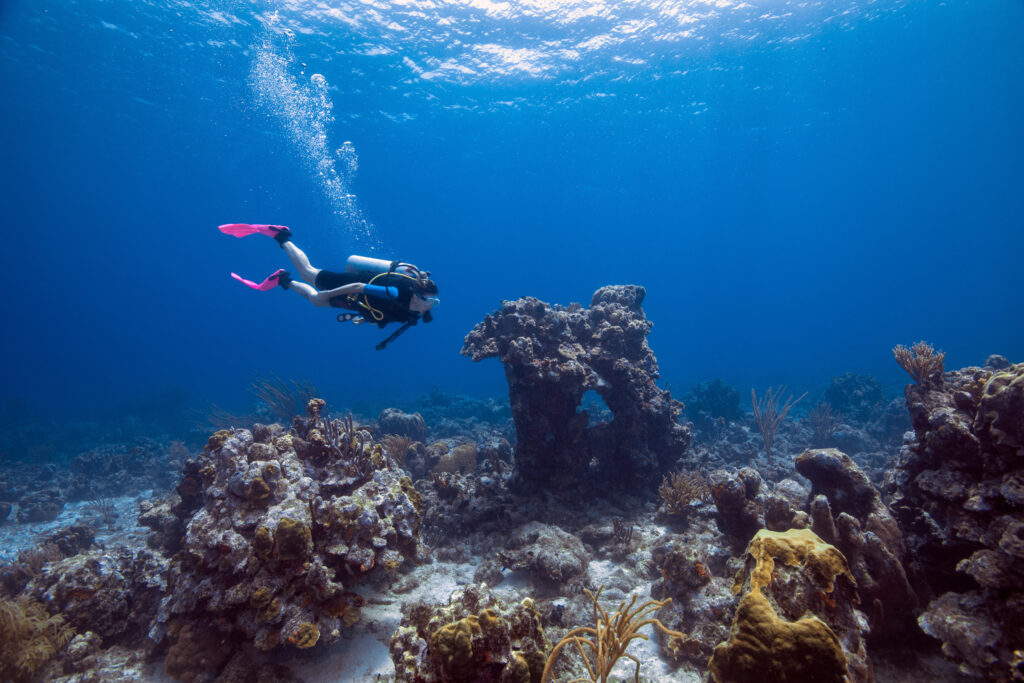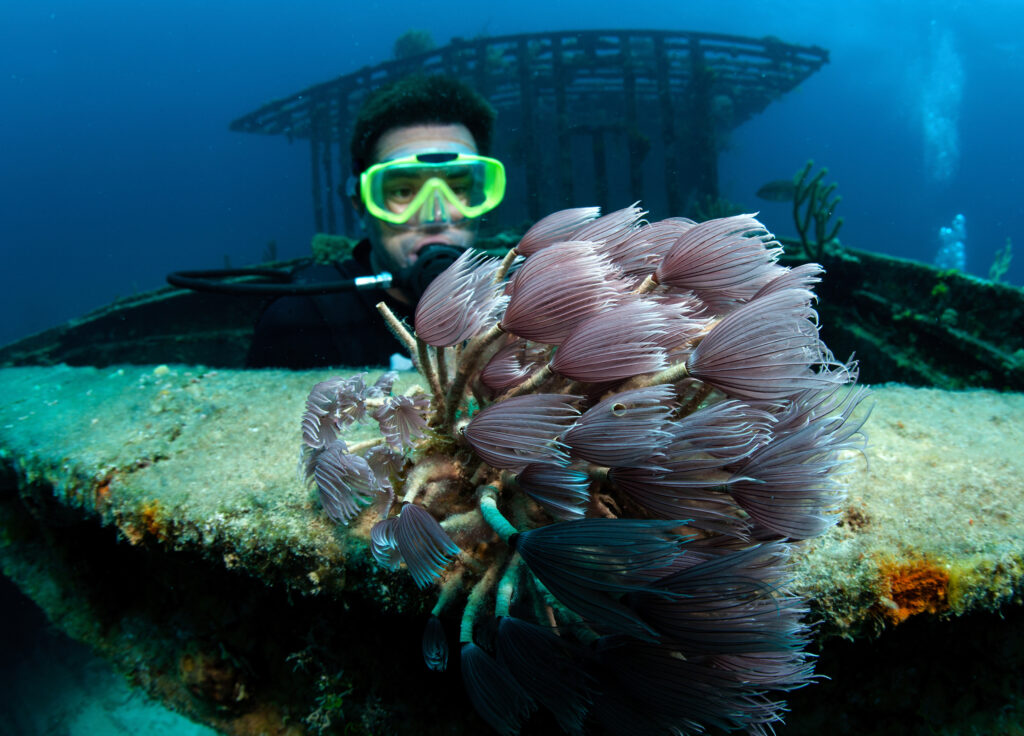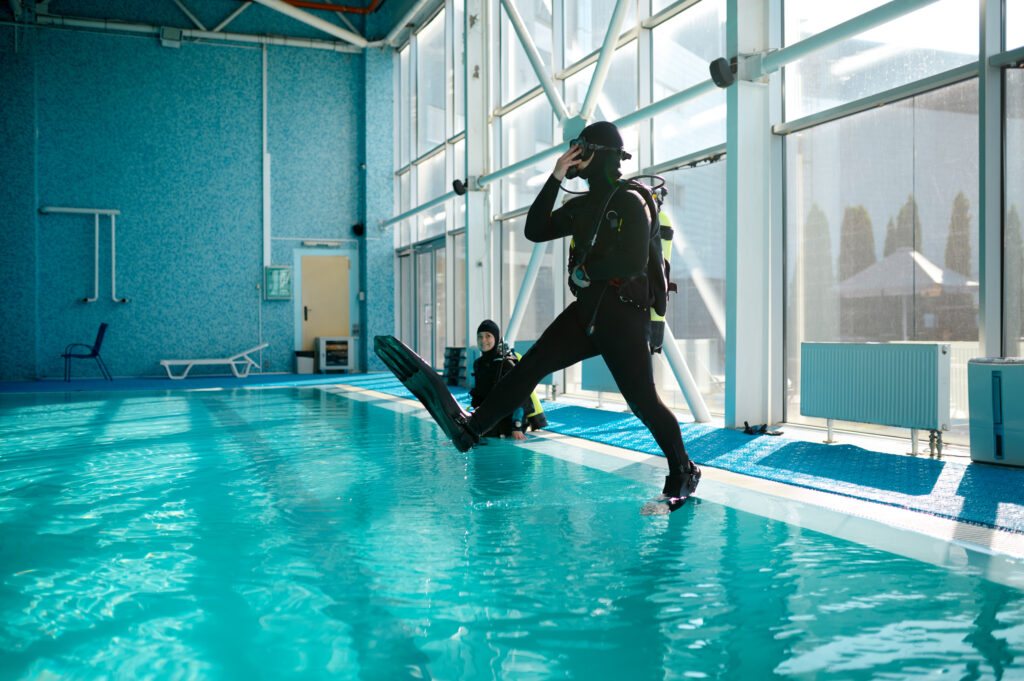What is Overweighting?

Overweighting in scuba diving refers to the practice of using more weight than necessary to achieve neutral buoyancy underwater. Proper weighting is crucial for maintaining control, safety, and efficiency while diving. Overweighting can occur due to various factors, including misconceptions about the amount of weight needed, incorrect gear configuration, and psychological influences. Understanding the implications of overweighting and how to manage it is essential for divers of all levels to ensure a safe and enjoyable underwater experience.
What is Eddy when Scuba Diving?

What is Eddy when Scuba Diving? An eddy is a circular movement of water, often formed on the side of a primary current, resulting in a localized whirlpool-like effect. This phenomenon typically occurs when the main flow of water encounters an obstruction, such as a projection or an opposing current. Eddies play a significant role […]
What is a Recreational Dive Planner (RDP)?

What is a Recreational Dive Planner (RDP)? The Recreational Dive Planner (RDP) is a decompression table developed by the Diving Science and Technology Corporation (DSAT) to facilitate safe and efficient planning of no-stop recreational scuba dives. DSAT, an affiliate of the Professional Association of Diving Instructors (PADI), is dedicated to the advancement of diving safety […]
What is Hypoventilation?

Hypoventilation, a crucial concept in scuba diving, refers to a reduced rate or depth of breathing that results in inadequate ventilation and increased levels of carbon dioxide (CO2) in the blood. Understanding hypoventilation is essential for scuba divers, as it directly impacts their safety and overall diving experience. In the underwater environment, where divers are subject to various physical and physiological stressors, maintaining proper breathing patterns is vital to avoid complications such as hypercapnia and its associated risks. This entry will delve into the physiology of breathing underwater, the mechanisms and causes of hypoventilation, its effects on divers, and best practices for prevention and management.
What is Freediving?

Freediving, also known as breath-hold diving or apnea, is an underwater activity that involves diving without the aid of scuba equipment or artificial breathing apparatus.
What is a Full Foot Fin?

A full foot fin is a type of swim fin commonly used in scuba diving and snorkeling. This design covers the entire foot, providing a snug fit akin to wearing a shoe. Unlike open heel fins, which require additional footwear like neoprene boots, full foot fins are worn barefoot or with thin neoprene socks. They are especially popular for warm water diving and activities where divers need agility and speed in the water. Full foot fins are valued for their streamlined design, which offers less drag and more efficient energy transfer from the legs to the fins, enhancing propulsion and maneuverability underwater.
What is an LED Dive Light?

LED dive lights are a critical tool for underwater exploration, providing divers with the necessary illumination to navigate and observe their environment. Light Emitting Diode (LED) technology has revolutionized underwater lighting, offering a reliable and efficient source of light that is well-suited for the unique demands of diving. This article explores the history, technological aspects, design features, types, applications, advantages and disadvantages, maintenance, safety considerations, and market trends of LED dive lights.
What is a Logbook?

A logbook, within the context of scuba diving, is an essential tool for recording the details of each underwater experience. This practice dates back to the early days of diving when keeping a written record of dives was crucial for ensuring safety and improving skills. Today, the logbook serves multiple purposes, from providing a personal history of dives to meeting legal and safety requirements. Maintaining a detailed logbook is a fundamental aspect of diving that enhances the overall experience and contributes to a diver’s growth and development.
What is a Lanyard?

A lanyard in the context of scuba diving is a crucial accessory designed to secure various pieces of diving equipment to a diver’s body or buoyancy compensator device (BCD). These cords, straps, or retractable reels ensure that essential tools such as cameras, flashlights, and dive computers remain attached to the diver, preventing accidental loss in the underwater environment. The importance of a lanyard cannot be overstated, as it contributes significantly to the safety and efficiency of diving operations, providing peace of mind and allowing divers to focus on their underwater activities.
What is Panic when Scuba Diving?

Panic in scuba diving refers to a sudden and overwhelming feeling of fear or anxiety that can severely impair a diver’s ability to think clearly and act appropriately. It is a critical issue in the sport because it can lead to dangerous situations underwater, where the margin for error is slim. Understanding panic is crucial for divers to ensure their safety and the safety of others. This entry examines the causes, symptoms, consequences, prevention strategies, and management techniques related to panic in scuba diving.
